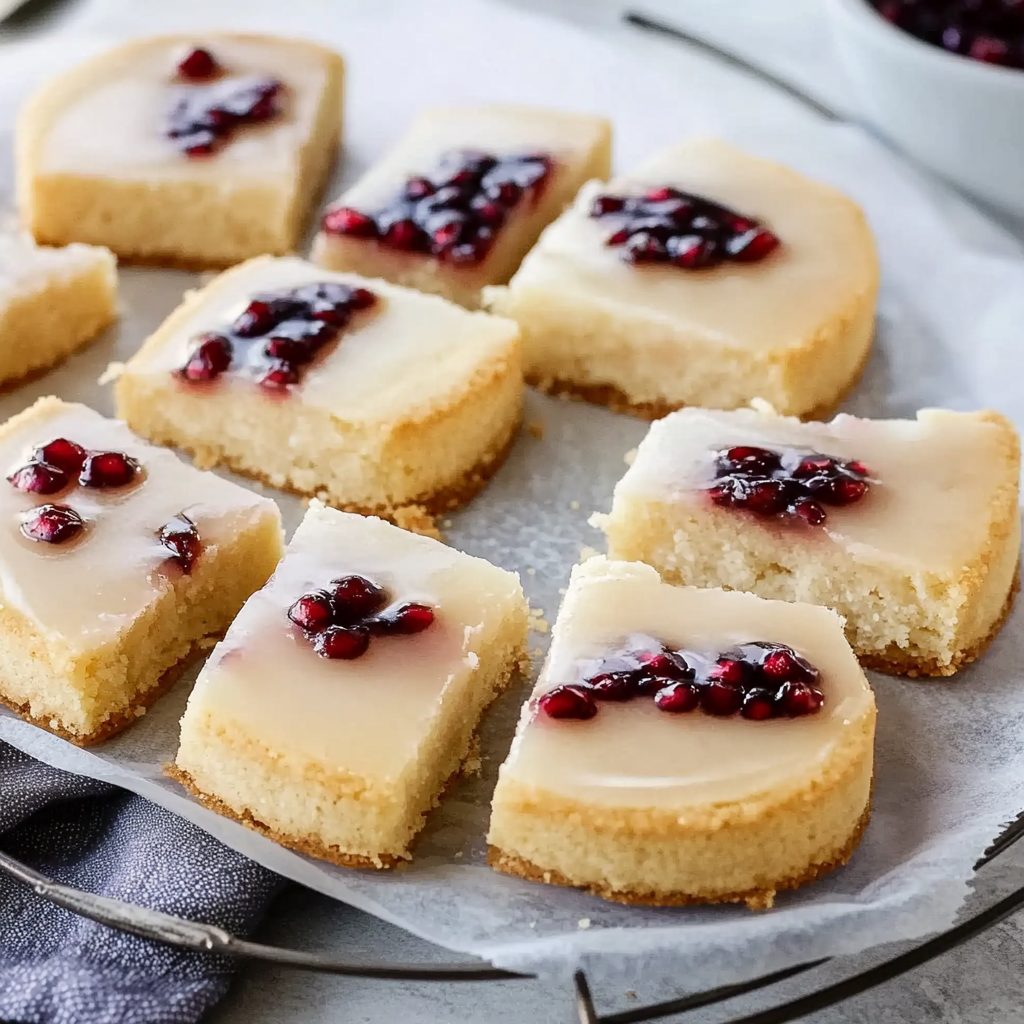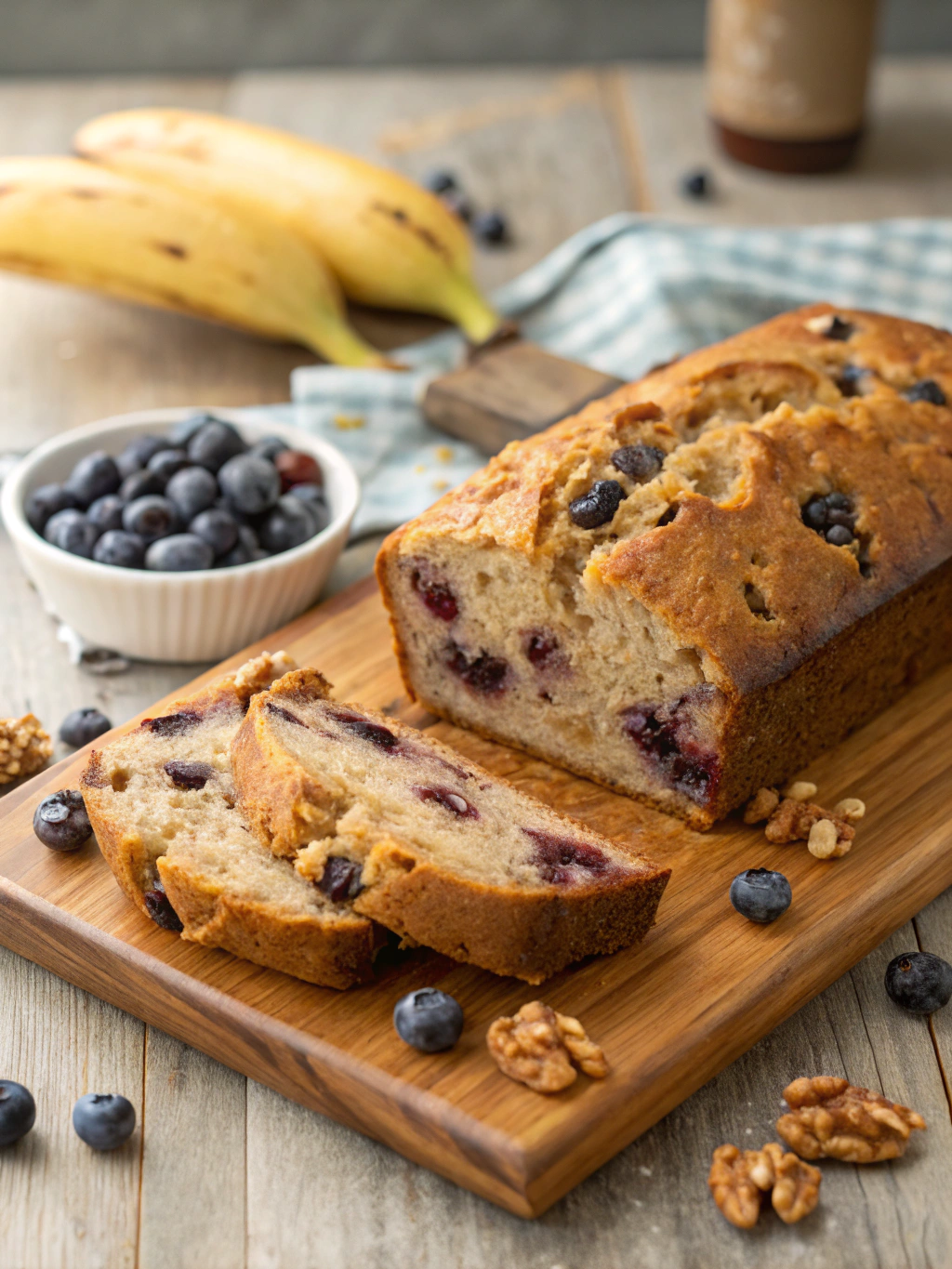Sharing is caring!
Pomegranate Shortbread Recipe
Why You’ll Love Pomegranate Shortbread?
Pomegranate shortbread is a delightful twist on the classic buttery cookie, blending rich, crumbly texture with the vibrant tartness of pomegranate. Perfect for holiday gatherings or a cozy afternoon treat, this dessert brings a pop of color and flavor that’s sure to impress. Whether you’re a seasoned baker or just starting out, this recipe is quick, easy, and utterly irresistible. Pair it with a cup of tea or serve it as a festive dessert—either way, it’s a crowd-pleaser. For more easy dessert ideas, check out our chicken pot pie with biscuits for a savory balance!
Table of Contents
- Ingredients to make pomegranate shortbread
- Time needed to make pomegranate shortbread
- Quick Steps to Make Pomegranate Shortbread
- Is pomegranate shortbread healthy and nutritious
- Can I make pomegranate shortbread healthier and still delicious
- How to Serve Pomegranate Shortbread
- Avoid These Mistakes
- The best way to store leftover pomegranate shortbread
- Ready to give pomegranate shortbread a try
- Frequently Asked Questions
Ingredients to make pomegranate shortbread
- 1 cup unsalted butter, softened
- ½ cup granulated sugar
- 2 cups all-purpose flour
- ¼ teaspoon salt
- ½ cup pomegranate juice, reduced to 2 tablespoons
- 1 teaspoon vanilla extract
- ½ cup pomegranate arils (for garnish)
- 1 tablespoon powdered sugar (optional, for dusting)
Time needed to make pomegranate shortbread
This delightful pomegranate shortbread comes together in just 30 minutes, making it perfect for last-minute desserts or impromptu gatherings. Here’s the breakdown:
- Prep Time: 10 minutes
- Bake Time: 20 minutes
- Total Time: 30 minutes
For more quick dessert ideas, check out this easy chicken tortilla casserole that pairs well with sweet treats.
Quick Steps to Make Pomegranate Shortbread
Step 1: Preheat & Prep
Preheat your oven to 350°F (175°C). Line a baking sheet with parchment paper for easy cleanup and to prevent sticking.
Step 2: Cream Butter & Sugar
In a large mixing bowl, beat softened butter and granulated sugar together until light and fluffy. This creates the perfect base for your pomegranate shortbread.
Step 3: Add Dry Ingredients
Gradually mix in flour and a pinch of salt until just combined. Be careful not to overmix—this keeps the shortbread tender.
Step 4: Fold in Pomegranate
Gently fold in fresh pomegranate arils or dried pomegranate pieces for that burst of fruity flavor and vibrant color.
Step 5: Shape & Chill
Press the dough into a rectangle or circle on the prepared baking sheet. Chill for 10 minutes to help the shortbread hold its shape while baking.
Step 6: Bake to Perfection
Bake for 20-25 minutes until the edges are lightly golden. Let cool slightly before slicing into bars or wedges.
Step 7: Optional Glaze
Drizzle with a simple powdered sugar glaze or sprinkle with extra pomegranate seeds for a festive touch. Serve and enjoy!
Is pomegranate shortbread healthy and nutritious
Pomegranate shortbread is a delightful treat, but is it good for you? While traditional shortbread is high in butter and sugar, this version incorporates antioxidant-rich pomegranate for a slight nutritional boost. A single serving (one piece) contains roughly 150 calories, 8g of fat, 18g of carbs, and 2g of protein.
The pomegranate seeds add fiber and vitamin C, making this dessert slightly healthier than plain shortbread. For a lighter option, check out our cauliflower-based recipes or explore whipped cream alternatives to reduce sugar content.
If you’re watching your sugar intake, consider pairing this treat with a protein-rich snack like air-fryer chicken to balance your meal. For more wholesome dessert ideas, pumpkin cheesecake offers a lower-sugar alternative with similar indulgence.
Can I make pomegranate shortbread healthier and still delicious
Absolutely! You can enjoy this delightful treat with a few smart swaps that maintain its rich flavor while boosting nutrition. Here are some easy tweaks to make your pomegranate shortbread healthier without sacrificing taste:
1. Whole Grain Flour
Replace half or all of the all-purpose flour with whole wheat or almond flour for added fiber and nutrients. The nutty flavor complements the pomegranate perfectly. If you’re looking for more grain alternatives, check out our cauliflower fried rice recipe for inspiration on healthy swaps.
2. Natural Sweeteners
Reduce refined sugar by using honey, maple syrup, or coconut sugar. These options add depth of flavor while keeping the sweetness balanced. For more sugar-free ideas, explore these healthy dessert tips.
3. Healthy Fats
Swap butter with coconut oil or Greek yogurt for a lighter texture. This change cuts saturated fat while keeping the shortbread tender. For more healthy fat alternatives, our creamy smothered chicken recipe uses similar principles.
4. Boost Antioxidants
Add extra pomegranate seeds or a drizzle of pomegranate molasses for an antioxidant punch. This enhances both nutrition and flavor. For more antioxidant-rich recipes, this split pea soup is packed with healthy ingredients.
With these simple changes, your pomegranate shortbread becomes a guilt-free indulgence that’s just as delicious as the original!
How to Serve Pomegranate Shortbread
This buttery, fruity pomegranate shortbread shines as a standalone treat, but pairing it thoughtfully elevates the experience. Serve it warm with a scoop of vanilla bean ice cream for a delightful contrast of textures. For a festive touch, drizzle with melted dark chocolate or sprinkle extra pomegranate arils on top.
Pair it with a cup of spiced chai or herbal tea like hibiscus for a cozy afternoon snack. If you’re hosting, arrange these shortbread cookies on a dessert platter alongside other seasonal treats like pumpkin cheesecake bites or pecan sandies for variety. For a lighter option, try it with a citrus-infused sparkling water or a dollop of vanilla whipped cream.
Want a savory balance? Offer a cheese board with sharp cheddar or creamy brie—the tanginess complements the shortbread’s sweetness. For more pairing ideas, check out our guide to easy crowd-pleasing desserts or decadent comfort food combos.
Avoid These Mistakes
Making pomegranate shortbread is simple, but a few common errors can affect texture and flavor. Overmixing the dough leads to tough cookies—gently combine ingredients just until incorporated. Chilling the dough is essential; skipping this step causes spreading during baking. For perfect results, refrigerate for at least 30 minutes.
Another mistake? Using room-temperature butter instead of softened butter. It should be pliable but not melted. If your shortbread turns out too crumbly, try adding a teaspoon of cold water to bind the dough. For evenly baked cookies, rotate the baking sheet halfway through. Check out our sheet pan recipes for more even-cooking tips.
Baking at the wrong temperature is another pitfall. Too high, and the edges burn before the center cooks. Too low, and you’ll lose that golden crispness. An oven thermometer ensures accuracy. For more baking insights, explore precision cooking techniques from trusted chefs.
Finally, don’t skip the pomegranate arils’ prep. Remove all pith to avoid bitterness. If using juice, opt for 100% pure pomegranate juice without added sugars. For alternative fruit-infused desserts, try our fruit-filled pastry ideas or get inspired by nutty cookie variations.
The best way to store leftover pomegranate shortbread
To keep your pomegranate shortbread fresh and flavorful, store it in an airtight container at room temperature for up to 5 days. For longer storage, wrap individual pieces tightly in plastic wrap and freeze for up to 3 months. Thaw at room temperature before serving.
If you’re stacking layers, place parchment paper between them to prevent sticking. For extra freshness, add a small piece of bread to the container—it helps absorb excess moisture. Want more dessert storage tips? Check out our guide on storing baked goods or explore freezer-friendly recipes for inspiration.
Reheating is simple: warm shortbread in a 300°F oven for 5 minutes to revive its crisp texture. Avoid microwaving, as it can make them soggy. For more creative ways to use leftovers, try crumbling them over yogurt or ice cream—like this whipped cream dessert or cookie-inspired toppings.
Ready to give pomegranate shortbread a try
This delightful dessert is perfect for any occasion, combining the rich, tart flavor of pomegranate with buttery shortbread for a treat that’s both elegant and easy to make. Whether you’re hosting a holiday gathering or just craving a sweet snack, this recipe delivers. For more quick and delicious dessert ideas, check out our creamy smothered chicken or chicken pot pie with biscuits. If you love fruity desserts, you might also enjoy our honey soy baked chicken thighs or loaded bacon cheeseburger pasta for savory inspiration.
Frequently Asked Questions
Can I use frozen pomegranate seeds for pomegranate shortbread?
Yes, frozen pomegranate seeds work well. Just thaw and pat them dry before adding to the dough to prevent excess moisture.
How long does pomegranate shortbread stay fresh?
Stored properly in an airtight container, it stays fresh for up to 5 days at room temperature or 2 weeks in the fridge.
Can I make pomegranate shortbread gluten-free?
Absolutely! Substitute the all-purpose flour with a 1:1 gluten-free flour blend for equally delicious results.
Why is my shortbread too crumbly?
This usually happens if the dough is overworked or lacks enough butter. Mix just until combined and measure ingredients precisely.
Can I freeze pomegranate shortbread dough?
Yes, the dough freezes well for up to 3 months. Wrap tightly in plastic before freezing, then thaw in the fridge before baking.
What’s the best way to incorporate pomegranate flavor?
For intense flavor, try adding 1 teaspoon of pomegranate molasses to the dough along with the seeds.












